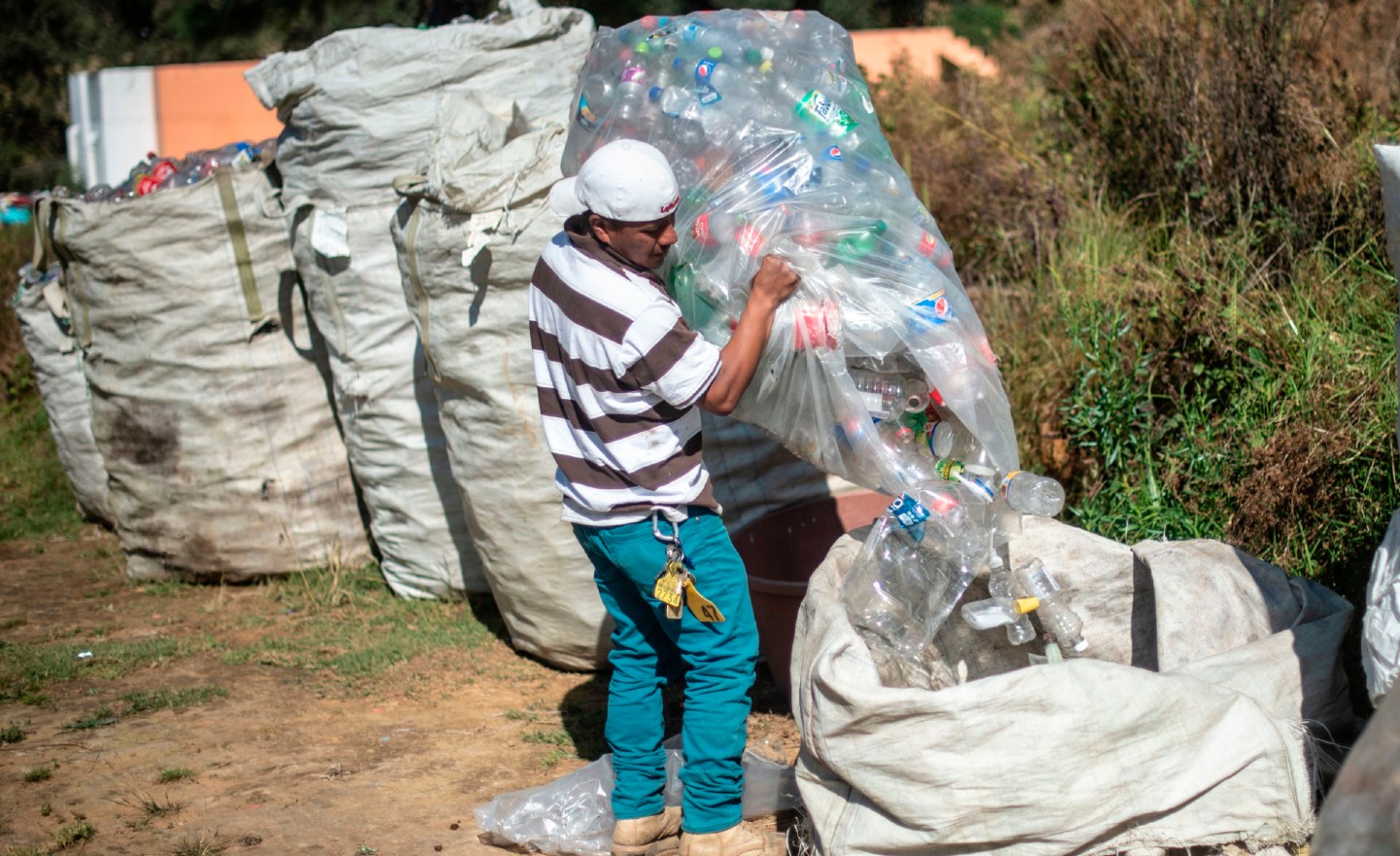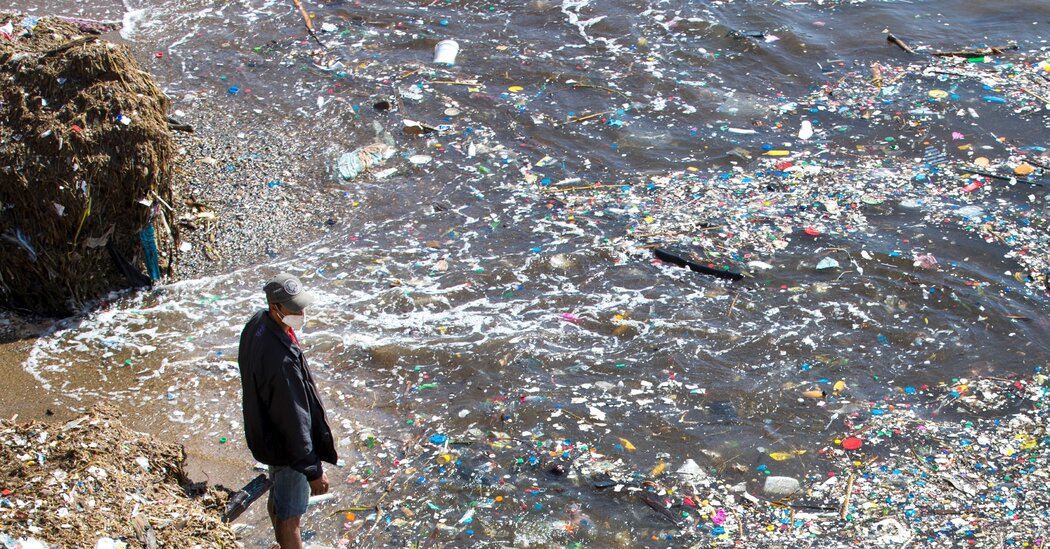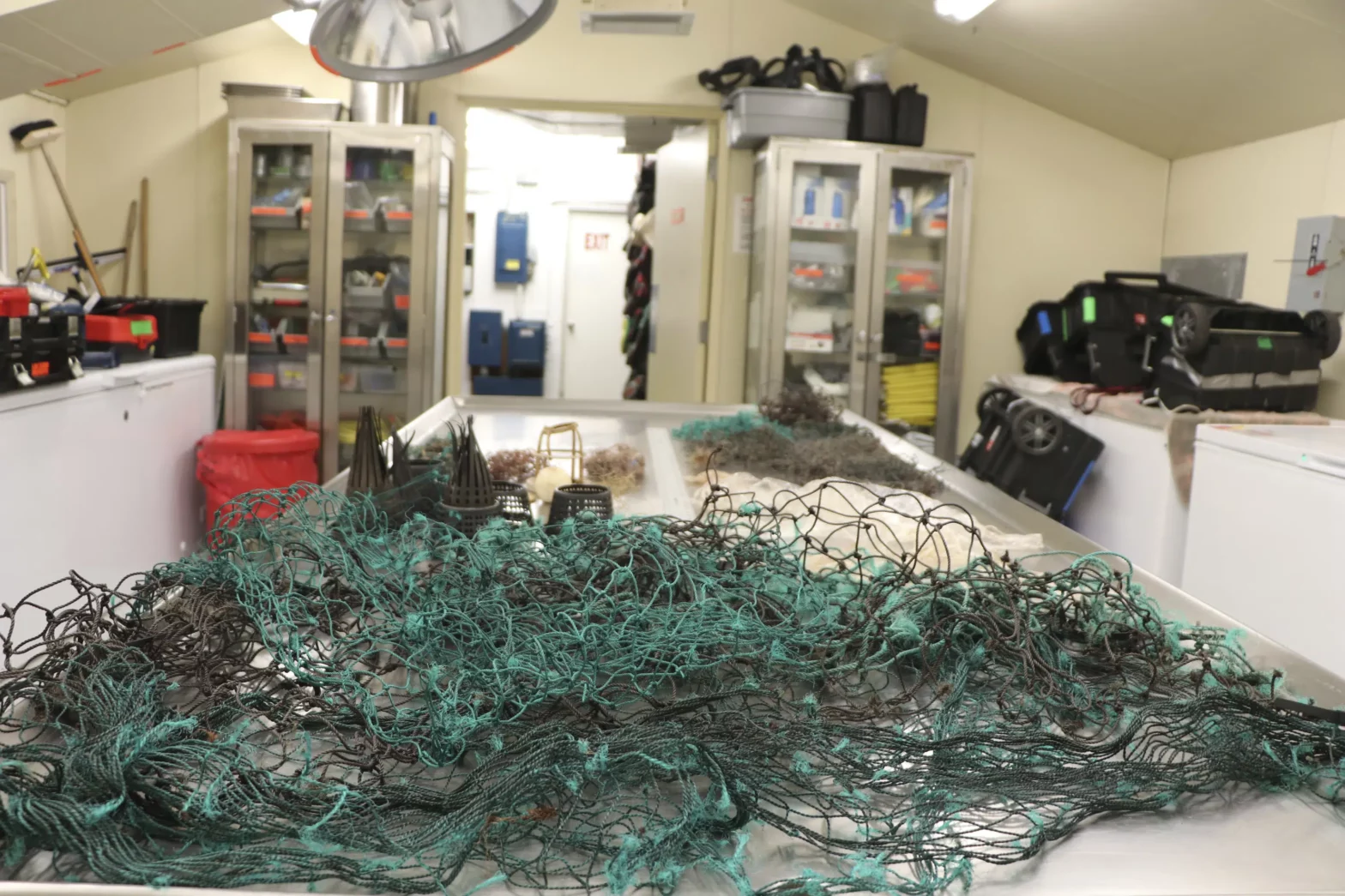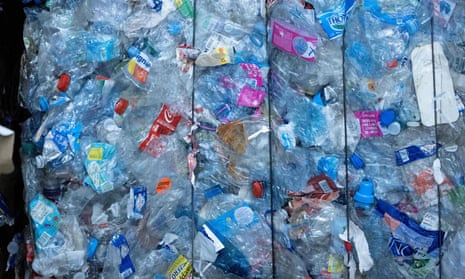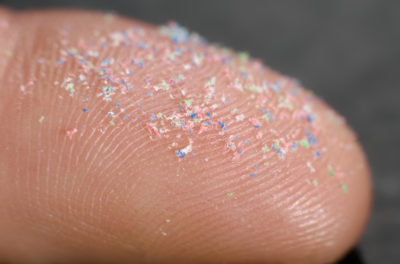Can the EPA strategically buy its way to waste reduction and increased recycling? | The Hill Skip to content Getty Images The Organization for Economic Cooperation and Development (OECD) published a report last year finding that plastic pollution is quickly increasing as waste management and recycling efforts are falling short. The organization found that the …
Category Archives: News
Marcus Strom: Think plastic pollution is your own fault? That’s rubbish
February 13, 2023 — 7.00pm February 13, 2023 — 7.00pmNormal text sizeLarger text sizeVery large text sizeThe fallout from the collapse of the soft-plastics recycling programs in Australian supermarkets continues with news that millions of plastic bags kept aside for recycling are destined for landfill.And despite plastics recycling programs being common for many years, production of single-use plastics continues to surge.A stockpile of plastic bags in a Sydney warehouse. Nearly 12,400 tonnes of soft plastics have now been found in 32 locations across three states.These revelations expose more than just a failure of intent from the recyclers and the supermarkets. They show that they are more useful for greenwashing than dealing with the growing global mountain of plastics.Australians want to do the right thing to deal with plastics pollution. But the recycling schemes that have been on offer have barely touched the surface. The result? While people feel they are “doing their bit” for the environment, behind the scenes, recycling schemes make handy profits while the real global polluters are let off the hook.Central to the thinking of these schemes is that you, personally, are responsible for pollution and global warming. Yes, it’s all your fault. The same with being worried about your individual “carbon footprint” or being guilt-tripped for taking holidays.This has the outcome of demobilisation: sidetracking people from action to demand real change, while making individuals feel guilty and responsible for a planet-wide trashing of our environment.In fact, it’s not “your fault” but is a design feature of an economic system that accumulates more and more wealth for its own sake; that churns through more and more resources to feed that gluttony.Options for individuals to take their plastics and paper for recycling have been around for many years. Yet these “acts of consumer power” haven’t stopped masses of plastics forming in our oceans; a crisis so bad that the World Economic Forum in 2016 warned that plastics could outweigh fish in our oceans by 2050.Stockpiles of soft plastics found in Sydney warehouses.Credit:EPA NSWAdvertisementWhen single-use plastics were removed, supermarkets adopted “environmentally conscious” multi-use bags at 15¢ a pop.Many of these bags – worse for the environment than the bags they replaced – are used once and end up in landfill. Further, they become a revenue source for the supermarket chains. Queensland University of Technology academic Professor Gary Mortimer predicted the change to “reusable” plastic bags could deliver an extra $71 million a year in profits to retail giants Coles and Woolworths.Again, it is part of an ideology that tells people they are individually responsible for environmental degradation when in fact it is a global profits system and a few hundred companies worldwide that are trashing the planet.While the exact data are contested, a 2017 study argued that just 100 fossil fuel and cement companies contributed to 71 per cent of greenhouse pollution since 1988. Rather than tackle these polluting giants, individuals are asked to “do their bit”.Individual recycling schemes, like carbon offset schemes, have more in common with religious penance than urgent action to deal with plastics pollution or greenhouse gas emissions.As pointed out some years ago by Carbon Trade Watch and UK research outfit The Corner House, the push to make individual consumers feel guilty and responsible and pay a “little bit more” has more in common with medieval indulgences than real action on the environment.During Europe’s Dark Ages, the church told the benighted and sinning masses that the priesthood and assorted clergy had an abundance of holiness, while the individual believer was a sinner and damned to hell. But by purchasing indulgences from the church, they could transfer some of that holiness to their rotten lives, offsetting their sinful practices.Sound familiar?REDcycle does face prosecution in Victoria for failing to disclose its mountains of plastics. But the maximum fine is $165,000. Chicken feed.In NSW, the Environment Protection Authority has told Woolworths and Coles to clear the REDcycle warehouses at a potential cost of $3.5 million. Together, both companies made about $2.5 billion in profit last year.These companies will get away with a slap on the wrist. Meanwhile, oil companies continue to pump plastics into the environment, governments greenwash and climate protestors are threatened with prison.This tells us something about how seriously we are taking the climate crisis: punish the annoying Cassandras, let the real sinners off the hook.The Opinion newsletter is a weekly wrap of views that will challenge, champion and inform your own. Sign up here.Marcus Strom is a journalist. He worked as a press secretary in the Albanese government.Connect via Twitter.Most Viewed in Environment
Derailed train in Ohio carried chemical used to make PVC, ‘the worst’ of the plastics
The flames and deadly black smoke that billowed high over a small town on the Ohio and Pennsylvania border Monday were an acute reminder of a type of commonly used plastic with a particularly troublesome environmental and health record.
To prevent exploding rail cars, flying shrapnel and the uncontrolled release of killer gases, authorities vented vinyl chloride, a precursor of polyvinyl chloride, or PVC, and then burned the vinyl chloride in what officials described as a controlled manner, following Friday’s 50-car Norfolk Southern Railroad train derailment near East Palestine, Ohio, about 55 miles northwest of Pittsburgh. Local media showed dramatic video of an explosion and fire after Ohio Gov. Mike DeWine and Pennsylvania Gov. Josh Shapiro ordered evacuations.
On Tuesday, Ohio Director of Public Safety Andy Wilson said at a press conference that the fire was out and there had been no serious injuries, CBS Pittsburgh reported.
While the drama played out in Northern Appalachia, the story actually begins with an insatiable global demand for plastic and what United Nations officials describe as a “triple planetary crisis of climate change, nature loss and pollution.”
Vinyl chloride has been used to make polyvinyl chloride, used commercially to make such products as floor tiles, roofing and tents, for nearly 100 years. And there have been battles between industry and environmentalists over PVC for decades.
The versatile form of plastic that can be made to be rigid and durable for pipes, or soft and flexible for products such as intravenous bags and tubing, is no longer used as much as in the past in food packaging due to environmental health concerns. But it’s still a major building material for the construction industry, including siding and windows.
But one national environmental group, the Center for Biological Diversity, has been pressing the Environmental Protection Agency since 2014 to regulate PVC waste as hazardous. And health experts have also talked about having PVC declared a “persistent organic pollutant” under the 2001 United Nations Stockholm Convention on Persistent Organic Pollutants, a treaty that seeks to protect human health from chemicals that remain intact in the environment for long periods.
Those chemicals now litter the planet, accumulate in the fatty tissue of humans and wildlife, and have harmful impacts on human health and the environment. The U.S. has not ratified the treaty but participates as an observer.
“This derailment and explosion, while it’s not discharging PVC, it is indicative of the hazardous nature of this material,” said Emily Jeffers, an attorney at the Center for Biological Diversity. “As long as we continue to use PVC, we will continue to have accidents like this and it is entirely preventable.
“If we regulate PVC as the hazardous waste that it is, that could potentially force producers to develop materials with less toxic properties,” Jeffers added. “We lived without PVC before and I am pretty sure we can live without it again.”
Petrochemical facilities that make or use vinyl chloride or PVC are often found in communities of color in states like Louisiana, Texas and Kentucky that shoulder the health burdens from their polluting emissions.
EPA last May agreed to look into a 2014 petition from the Center for Biological Diversity to designate PVC a hazardous material, following a 2021 lawsuit seeking the same designation.
In January, the agency made a tentative decision denying the request, arguing that regulations would not have a meaningful impact while adding that the agency didn’t have the time or resources to create new PVC regulations. A public comment period closes Monday.
Like other chemicals, PVC has its own lobbying group in Washington. Called the Vinyl Institute, it touts the benefits of vinyl and the vinyl industry, which it said encompasses nearly 3,000 vinyl manufacturing facilities, more than 350,000 employees and an economic value of $54 billion.
PVC and vinyl are the third most used plastics in the world, according to the institute, which says on its website: “We are fiercely committed to achieving the policy agenda that helps the U.S. vinyl industry grow and create jobs.”
PVC has been used a lot, said Dr. Philip Landrigan, a pediatrician, epidemiologist and director of Boston College’s Global Public Health Program and Global Observatory on Planetary Health. But, he added, “it has problems at every stage” of its lifecycle, beginning with potential dangers to workers who make it.
Vinyl chloride is classified as a known human carcinogen. Researchers in the 1970s first linked its occupational exposure to a rare form of cancer—angiosarcoma of the liver—to rubber workers at a factory in the Rubbertown complex of chemical plants in Louisville, Kentucky. “There’s also some evidence it causes brain cancers,” he said.
PVC also contains a variety of chemical additives, such as phthalate plasticizers, some of which are blamed for disrupting the human endocrine system.
“There is good evidence” that toxic ingredients in PVC “can leach out of plastics products and get into drinking water or blood products,” said Landrigan, whose research has helped drive U.S. public health policies on childhood lead exposure, pesticide exposure and the response to health impacts of 9/11 rescue workers in New York.
The industry has disputed such assertions. A 2017 report, for example, from the PVC Pipe Association maintains that PVC piping meets the “highest standards for quality and safety.”
Vinyl Institute spokeswoman Susan Wade said that PVC can and is being recycled, and according to the institute’s website, the industry has a goal of boosting the recycling of vinyl materials. “We know we have a good story to tell,” she said, pointing to a lifecycle carbon emissions study from McKinsey & Company that shows using PVC sewer pipes has less impact on the climate than using pipes made from concrete or iron.
Keep Environmental Journalism AliveICN provides award-winning climate coverage free of charge and advertising. We rely on donations from readers like you to keep going.Donate Now
Guess what? More plastic trash.
Industry figures show record production in 2021, and almost none of that plastic is getting recycled.When Exxon Mobil announced a record $56 billion annual profits last week, it noted that the company had established “one of the largest advanced recycling facilities in North America, capable of processing more than 80 million pounds of plastic waste per year.”That seems like a lot of recycling muscle, except when you consider another figure. The company produced an estimated 6 million metric tons, or 13.2 billion pounds, of polymers used to make plastic in 2021 alone. That is an estimate from a report published by the Minderoo Foundation, set up by the Australian mining magnate Andrew Forrest. Minderoo tracks plastic waste and campaigns against it.Exxon is the largest producer of virgin polymers, which are derived from petrochemicals and used in plastic. The second largest is a Chinese company called Sinopec.Asked for comment on the Minderoo report, an Exxon spokeswoman said that “plastics play a vital role in everyday life” and that the company is trying to scale up recycling. “By working with others in industry, governments, communities and consumers, we are helping expand recycling programs so that more plastic waste is transformed into valuable products rather than ending up in landfills.”Despite consumer concern, we are trashing more and more plastic.Plastics production continued to grow, according to industry data. So did plastic trash: 139 million metric tons in 2021, more than ever before. That’s a lot, especially considering that plastic entered our everyday lives after World War II. They’re so pervasive that when one reporter tried to spend a day living without plastic, it yielded this delightfully absurd essay.Almost all of that 139 million metric tons of plastic is made from “virgin” petroleum products that have never been used or processed before. Barely 2 percent gets recycled, Minderoo researchers estimated.Plastic waste is more than a local environmental pollutant.It clogs streams. It chokes turtles. It gets caught on a bare branch and blows in the breeze. It stews in landfills.But it is also a climate pollutant. From the extraction of fossil fuels to make polymers to the transport and disposal of the waste, single-use plastics produced 450 million metric tons of planet-warming greenhouse gases in 2021 alone, according to estimates by Minderoo, or just below the annual emissions of Britain.Minderoo is pressing for levies on “fossil-fuel polymer production and/or consumption” to fund the collection and recycling of plastic waste.A factory in Riverside, Calif., that makes plastic containers for fruit retailers.Mark Abramson for The New York TimesWhat about those triangles and arrows on plastic products?They’re deceptive. Many of us assume the ♺ triangle means we can dispose of the product in our municipal recycling bins. Not so. Each triangle has a number within. Numbers 1 and 2 are commonly recyclable in the United States. For Numbers 3-7, it’s sometimes, rarely or never. (California banned the use of the symbol on plastics that are not widely recyclable.)Rigid plastics are more likely to be recycled than soft plastics.Some of the worst kinds of plastics are also those products that are marketed to the poor, especially in the global south, like tiny, low-priced sachets for shampoos and creams. They’re made of soft, thin plastic that’s hard to collect, sort and recycle.Here’s our guide from last year, and an earlier Climate Forward newsletter that describes how some cities outside the United States are handling plastic waste.And the plastic bag bans?There have been many such bag bans in recent years. Among the unexpected consequences: They seem to lead to an increase in plastic trash bags.We’re keeping an eye on negotiations for a global plastics treaty.This is the battleground where plastic producers, environmentalists and negotiators from every country are hammering out what is intended to be a global agreement to deal with plastic waste.The big tension is between environmental campaigners who want to curb the production of polymers, the raw goods that go into plastic, and industry groups that want to focus on how to better collect and recycle plastic.At negotiations in Uruguay in December, the United States advocated for an accord like the Paris climate agreement under which countries would set their own national voluntary targets and plans. Others, including the European Union, want mandatory global regulations for every country and company to abide by.The next round of negotiations are in May. We’ll keep you posted.Essential news from The TimesAidan Colton, an atmospheric technician with NOAA, collected an air sample atop Mauna Kea in Hawaii.Erin Schaff/The New York TimesLava, snow and science: An eruption in Hawaii briefly halted long-running climate research, but scientists found a way to carry on. They moved to a neighboring volcano.A warship’s demise: The Brazilian Navy said it had begun an operation to send the aircraft carrier São Paulo, packed with asbestos, to the bottom of the Atlantic.Bad news for bears: The Biden administration is taking a step toward lifting protections for some grizzlies. It could open the door to hunting in Montana, Wyoming and Idaho.A Canadian quarrel: The Ontario provincial government has opened up parts of the greenbelt around Toronto for the construction of 50,000 new homes. Some locals aren’t happy.How to spy on a radical group: A literary agent struck a book deal with the spokesman for the Earth Liberation Front. Literature was the least of his concerns.From outside The TimesAccording to Axios, sales of plant-based meats are collapsing and companies that make them are in trouble.Reuters reported on deadly forest fires in Chile.The United Arab Emirates chose an oil executive to lead the next global climate summit. Now The Guardian is reporting that officials are giving oil workers other roles, too.From E&E News: President Biden has appointed a climate scientist to help evaluate the effectiveness of the country’s intelligence work.National Geographic interviewed former poachers of scarlet macaws in Honduras about why they decided to protect the birds instead.A short documentary from Scientific American shows why some scientists believe plants domesticated us, not the other way around.Carbon brief explained how Britain transformed its electricity supply in just a decade.Maria ChimishkyanBefore you go: So many questions. We’ve got answers.A few months ago we invited readers to ask us their questions about climate change, and you sent in more than 1,000 responses. Wondering what we did with all those questions? We used them to build an interactive F.A.Q. feature that lets you type in queries about climate change, in your own words, and get answers written by The Times’s climate reporters and editors. Please give it a try.We goofed: The Friday newsletter misstated the name of an advocacy group. It is Rewiring America, not Rewriting America.Thanks for being a subscriber. We’ll be back on Friday.Manuela Andreoni, Claire O’Neill and Douglas Alteen contributed to Climate Forward. Read past editions of the newsletter here.If you’re enjoying what you’re reading, please consider recommending it to others. They can sign up here. Browse all of our subscriber-only newsletters here.Reach us at climateforward@nytimes.com. We read every message, and reply to many!
Huge fire rips through plastics factory in south-east Melbourne
Huge fire rips through plastics factory in south-east Melbourne Crime scene established at Keysborough as residents within 2km warned to stay indoors Follow our Australia news live blog for the latest updates Get our morning and afternoon news emails, free app or daily news podcast A crime scene has been established after a fire engulfed …
Continue reading “Huge fire rips through plastics factory in south-east Melbourne”
Have climate questions? Get answers here
By some estimates, the world’s food system is responsible for one-quarter of humanity’s greenhouse gas emissions. It happens because forests get cleared to make room for farms and livestock. Cows and rice paddies emit methane, a potent greenhouse gas. Fossil fuels are burned to power farm machinery, make fertilizer and ship food.Anyone focused on the climate effects of diet should keep a few broad things in mind. First, beef, lamb and cheese tend to have the biggest effects on emissions by far — creating the most greenhouse gases per gram of protein — in part because cows and other ruminants are more resource-intensive to raise. Pork, chicken, eggs and many types of fish typically have smaller effects on emissions (though they can create other environmental concerns). Plant-based foods usually produce the fewest emissions of all.So the most straightforward way of reducing diet-related emissions is to consume less meat and dairy and more plants. It’s especially the case if you live in the United States, where red meat consumption is much higher than in many parts of the world.According to a World Resources Institute analysis, if the average American simply replaced a third of the beef they eat with lower-emissions pork or poultry or legumes, their food-related emissions would fall 13 percent. Moreover, a number of studies have found that people who currently eat a meat-heavy diet could shrink their food-related footprint by one-third or more by going vegetarian.It sounds like a no-brainer, but the other big way to shrink the climate effect of your diet is simply to waste less food. According to some estimates, Americans throw out roughly 20 percent of the food they buy.Other popular strategies are less clear-cut, at least when it comes to greenhouse gas emissions. Studies differ on whether grass-fed beef, for instance, is any more climate friendly than conventional feedlot beef, although some argue it’s better for animal welfare. Organic crops tend to require more land than traditional crops, which could lead to more emissions if such farming results in more deforestation. As for debates over locally grown produce, or paper vs. plastic bags, those are relatively small in the grand scheme of things, since transportation and packaging are a sliver of food’s climate effects.And, of course, there are other concerns besides climate change.For example, when compared with meat, wild fish can be a lower-emissions option. But that comes with a caveat: The world is already catching about as much wild fish as it possibly can. Most fisheries are being fished at their maximum sustainable level, while others are being overexploited. So more people switching to fish could require, among other actions, increasing the number of sustainable fish farms worldwide.
— Brad Plumer
Read more:
Your Questions About Food and Climate Change, Answered
Hawaii whale dies with fishing nets, plastic bags in stomach
HONOLULU (AP) — A whale that washed ashore in Hawaii over the weekend likely died in part because it ate large volumes of fishing traps, fishing nets, plastic bags and other marine debris, scientists said Thursday, highlighting the threat to wildlife from the millions of tons of plastic
Coles and Woolworths ordered to dump more than 5,200 tonnes of recycled soft plastic in landfill
Coles and Woolworths ordered to dump more than 5,200 tonnes of recycled soft plastic in landfill NSW environment officials alert Fire and Rescue over concerns plastic is being stored dangerously following suspension of the REDcycle scheme Follow our Australia news live blog for the latest updates Get our morning and afternoon news emails, free app …
Swallowed fishing gear and plastic most likely cause of Hawaii whale’s death
Swallowed fishing gear and plastic most likely cause of Hawaii whale’s death Large volumes of traps, nets and marine debris in sperm whale’s intestinal tract highlight plastic pollution’s threat to wildlife A sperm whale that washed ashore in Hawaii over the weekend probably died in part because it ate large volumes of fishing traps, fishing …
Continue reading “Swallowed fishing gear and plastic most likely cause of Hawaii whale’s death”
Microplastics are filling the skies. Will they affect the climate?
Recent studies reveal that tiny pieces of plastic are constantly lofted into the atmosphere. These particles can travel thousands of miles and affect the formation of clouds, which means they have the potential to impact temperature, rainfall, and even climate change.

